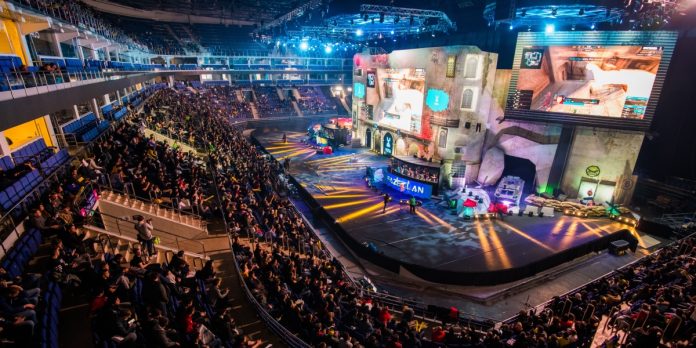The growing popularity of esports in Latin America is set to create huge opportunities for sportsbook operators as regulation spreads across the region. To find out more about the vertical’s potential, SBC Americas spoke to Angel Calderon, LatAm Head of Sales for SIS.
SBC: Esports are particularly popular in Brazil, Mexico, and Central America. What is it about those cultures that makes esports so attractive to local audiences, and what sort of potential do esports offer for operators in other countries in Latin America?
Angel Calderon: People that live in those countries and territories are renowned for being hugely passionate when it comes to sport. That same enthusiasm is shared for esports, which has seen its popularity surge in recent years. Neymar is a huge fan of CS:GO and was seen at this year’s Intel Extreme Masters, the world’s biggest CS:GO championship. Having the full weight of the backing of Brazil’s star soccer player can certainly help embed esports into the mainstream.
The 24/7 nature of the content has massive appeal, particularly with a younger audience that consumes content quickly and wants fast, engaging experiences. With esports teams, including MIBR and FURIA, garnering massive followings – the latter counts Neymar as a fan – the teams and players are fast becoming household names and are obtaining crossover appeal.
We have seen that the growth of esports has been a very important trend in LatAm. Consequently, all commercial aspects associated with esports have also grown in the region, such as sponsorship, broadcasting rights, and the proliferation of leagues. This has turned esports into one of the most lucrative industries, and it means major brands want to be involved.
SBC: One feature of professional esports in Latin America is that many of the professional competitors are young – often underage for gambling. As more countries regulate their gambling markets, will this become an issue?
AC: I believe when this issue and similar ones have arisen in the past, brands and regulators have done a good job of preventing any acceleration of the problem. However, esports resonates with a younger audience, so there needs to be strong measures in place that ensure bettors and participants are properly checked and approved.
We have taken considerable steps to prevent any such issue with our Competitive Gaming product, where integrity is at its core. Our secure in-house studios provide a safe environment where competitors are extensively checked that they are over 18. Of course, lower-tier tournaments may not have the infrastructure to conduct these checks, which represents a considerable risk for operators.
SIS Competitive Gaming was built completely for sportsbooks, and we are the first esports betting supplier to have been awarded the Gold Standard from the Esports Integrity Commission (ESIC), an organization that was created to set unmatched levels of integrity and safety in the industry.
A trained referee oversees every event, and we make sure to match up our gamers with rivals of a similar standard so that contests are keenly fought, and there are limited one-sided matches.
We take pride in the measures we have taken in vetting players. We make the offering as transparent and as fair as possible, with restrictions on phone use, not releasing schedules too far in advance, and taking as many precautions as possible to provide a safe environment for our product, players, and operational teams to flourish.
SBC: What benefits can focusing on esports now bring to sports betting operators as the industry prepares for what is widely expected to be strong growth as more jurisdictions in the region regulate online gambling?
AC: There is definite scope for esports to attract a new audience to sportsbooks, while sports simulations can attract additional engagement through live contests. We believe that round-the-clock content will be a major attraction for operators, with short-form events happening 24/7 across regulated markets.
We have seen the popularity of in-play betting soar in the last decade, and it is no different for esports. However, with tournament-based betting, latency can cause a serious problem for in-play betting, as streaming delays can be as long as five minutes. This means that traders have to be careful about the in-play markets they can offer. However, in-house solutions like Competitive Gaming can solve this issue through ultra-low latency, providing a true in-play betting experience with a wide range of markets.
The surge in popularity in esports means that operators cannot ignore the eyeballs that it brings. With a stream of new games and innovations, including recent news of CS2, the most significant update Counter-Strike has had in over a decade, this only emphasizes the appetite for additional betting content.
Esports, more specific sports sims, will certainly be more of a focus for operators. We’ve seen a surge in ebasketball alongside the NBA finals and with the summer break in the football calendar beginning, esoccer is a perfect product for operators to capture the interest of those sports bettors.
SBC: Moving away from esports, we know that nations such as Argentina, Brazil, Chile, Mexico, Panama, and Uruguay are home to some top-class horse racing. How can local betting operators best engage with racing fans, both online and in a retail setting?
AC: All sports face a challenge in engaging younger audiences. Attendances are reducing at sporting events at an alarming rate, and horse racing is certainly feeling the brunt of this.
Operators need to adapt the way they communicate with younger people and be receptive to fresh ideas and campaigns. There is a need for more dynamic digital services to excite and engage. Content should be designed to make the fans and betting customers part of the story and narrative.
There is also a case for operators to alter their thinking from a betting perspective and simplify things. Horse racing can be quite a daunting sport to bet on, with so many details, including age, weight, and previous form detailed on racecards. So, there should be an onus on operators to present an easy proposition for consumers.
Incentives are also enticing, with price boosts, extra places, and money-back offers giving huge appeal for bettors to wager with particular operators. Of course, much depends on regulations and what operators can and cannot do within that particular framework, but other markets around the world prove that this is an effective way for operators to engage across both verticals.
SBC: Are there big differences between the tastes of racing fans in countries across the region? How can operators effectively localize their offering for those fans?
AC: Racing fans want high-quality contests to wager on and that isn’t restricted to just one market.
Latin Americans love their sport but also love tailored experiences, as do all bettors. So, brands need to cater for all audiences, and there shouldn’t be any barriers.
Language is a key factor in providing localized offerings in Latin America, with various languages spanning the territory, and people take immense pride in their culture. This is an area that operators can tap into successfully. If betting opportunities are easy to communicate and understand, bettors won’t feel alienated and will look favorably at operators that can provide this.
We have seen positive engagement with our products that have a range of native languages, so we know the appetite is there from bettors for more localized content. It is up to operators to provide it.
SBC: And finally, SIS’s Numbers games have proved a hit in Europe. How do you see them working in markets in Latin America?
AC: Lotteries and live draws are huge in Latin America, and with the growth we have seen with our own Numbers offer, we are certain that momentum will continue in this market. Our 49’s product has evolved with great success recently. The premium feel, and customer credibility that comes with the longest-running fixed-odds lottery product in the world helps provide superior revenues for operators.
Avid fans of live draws turn to social media and online forums to take their experience to another level. There is a significant community of bettors who enjoy interacting with each other, which helps to enhance the overall spectacle that traditionally comes with a live draw. There is a broad array of influencers within the betting and gambling space in Latin America. With over 200,000 live draws per year, we are sure to see ample engagement digitally as we provide the market with the most comprehensive live draw product.













